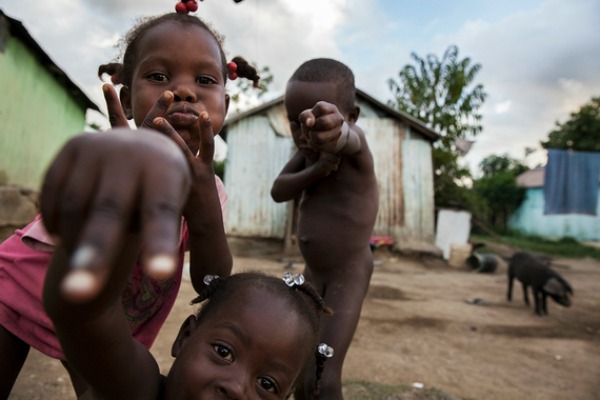BY Erica Simone
In this globalized world of consumption we live in, rarely do we stop to think about where our goods actually come from, who cultivated them or what life is like for the people at the beginning of the production chain. When you open a pack of sugar and empty it into your tea or coffee, do you ever consider the process of how that sugar ended up on your table? Do you ever think about what the people are like at each step of the production: the cultivators of the fields, the owners of the land, the processing plant workers, the packaging designers, the marketing team, the distributors, the transporters, the wholesalers, the retailers, and ultimately you, the consumer?
Last month, I traveled to a village called the “Batéy 106,” where a community of sixty Haitian families live and toil on a sugar cane plantation in the hills of the Dominican Republic, fifty miles north of La Romana. Here I was, at the beginning of the food chain: the very chain I would sometimes dream about while stirring my coffee. It was now possible to meet these people, observe them in their environment, learn from them, play with them, teach them, and most of all, document them.
Read more: Batéy 106: Portraits from a Dominican Sugar Cane Plantation | Erica Simone.
The Foundation for Art in Motion is committed to working with and helping the Batéy 106 over time and is always looking for additional help and sponsorships. For more information about the Batéy 106, please visit www.batey106project.org and www.artinmotionshow.org.
We invite you to subscribe to the weekly Uptown Love newsletter, like our Facebook page and follow us on Twitter, or e-mail us at [email protected].

